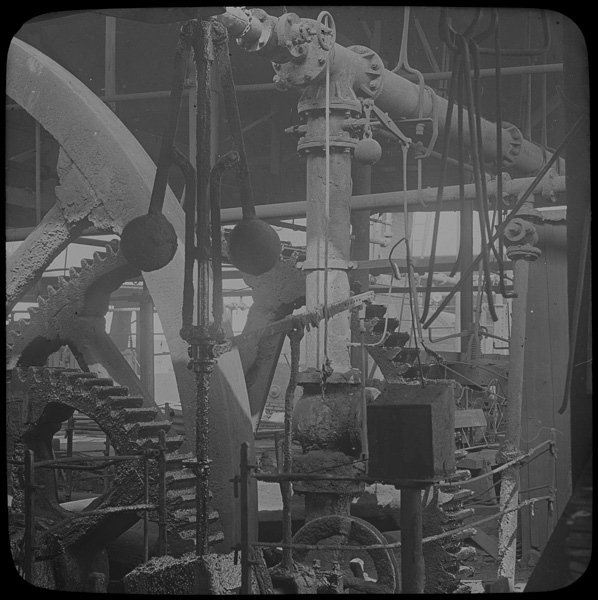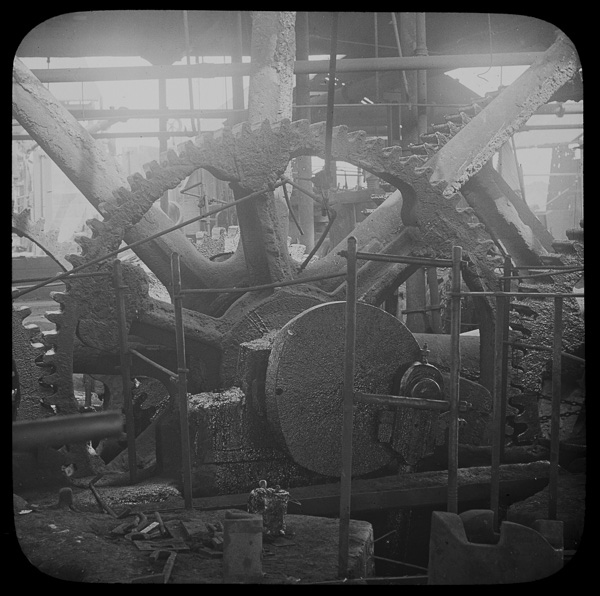10 Feb 2024
My great-grandfather Clarence was an engineer and steam engine designer. From at least 1912 until his death in 1947 he kept a daily journal, to begin with mainly relating to his work but later including travels and more general information. Part of his job in the 1910’s was to travel the country visiting places such as mills, factories, foundries and mines looking for business anywhere that might need a new steam engine for power in the days before electrical grids. And of course he took his camera with him.
In 1913 Clarence visited Johnson’s Iron and Steel in West Bromwich as they were in the process of building a new rolling mill and were wanting to replace the existing steam engine with a new one. This to generate electricity to drive the rollers in the new mill. The company Clarence worked for, Newton, Bean and Mitchell, eventually got the order but it was a long drawn out affair over several years. Johnson’s cannot have been an easy company to deal with, at one stage they tried to play off 2 potential suppliers against each other. Clarence advised his boss to withdraw their quote knowing that the other supplier was unable to produce an engine to the specification. It must have worked as Johnson’s came back and asked them to re-submit the quote which they then accepted.
While there on a site visit he took some photos of the existing engine.

Thursday 30th October 1913
Johnson’s Iron and Steel, West Bromwich.
(Regarding the existing engine)
This has been working day and night for a great number of years. The engine is a fearful affair and nobody dares go down in the pit when it is running, one man was killed in the pit, he got under the crankshaft. The engine is non-condensing and exhausts to the atmosphere through the roof. There used to be 3” clearance in the cylinder at each end of stroke to allow for the clearing of the cylinders. But they altered this some years since and fitted blocks on the covers. This reduced the consumption a little. The engine cuts off at ⅞ stroke. The governor is a great slow seed Watt type acting on the throttle. The cylinders are in a filthy pit, full of grease, water and out of sight in steam leakages. It would be impossible to indicate.
Engine 350hp
2 cyls. 26 ½” bore 30” stroke
60 RPM
Steam 50lbs non-condensing
Steam at engine about 45lb.
I think the dark and somewhat depressing photographs do give an idea of what must have been a dismal place to work.
